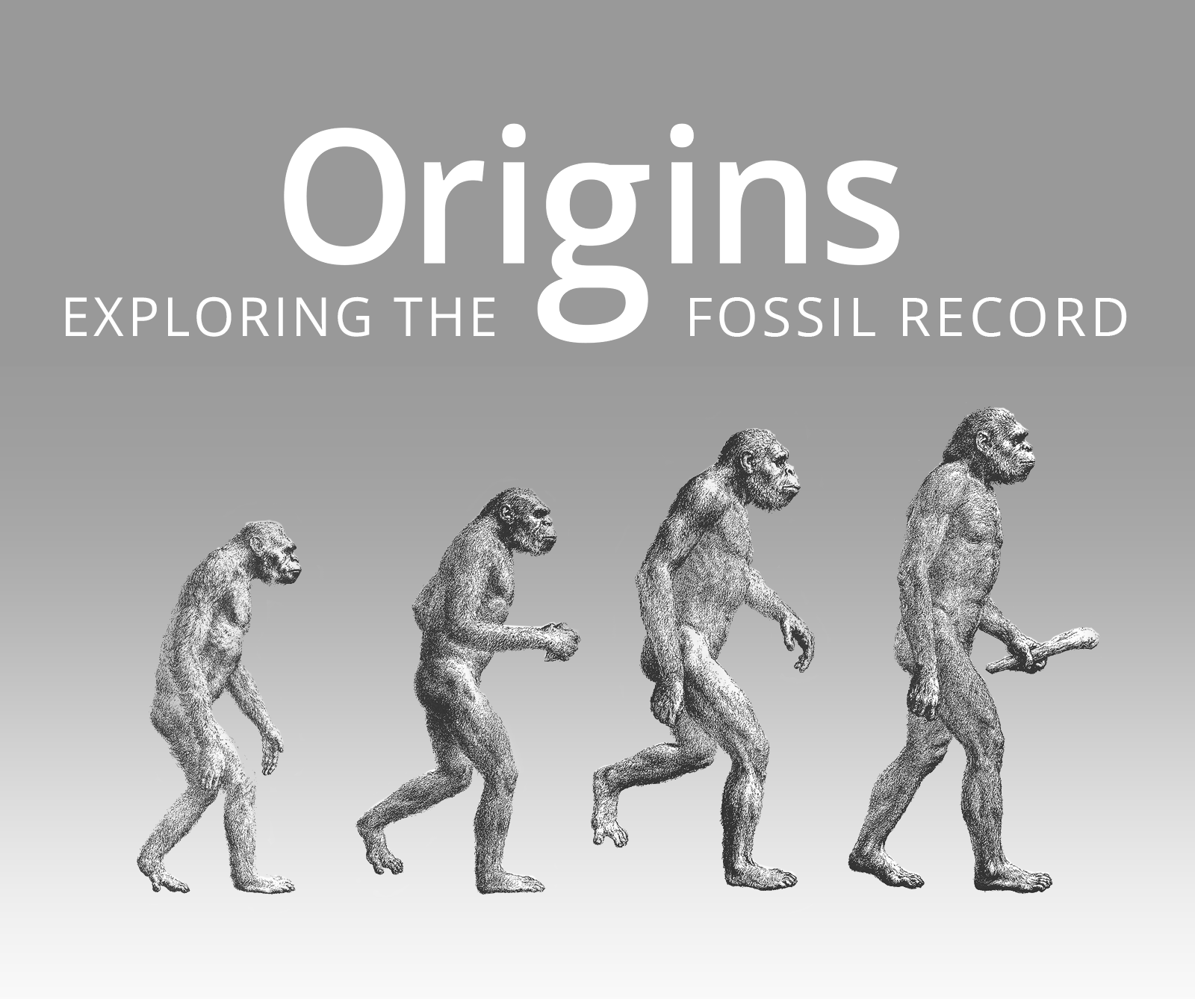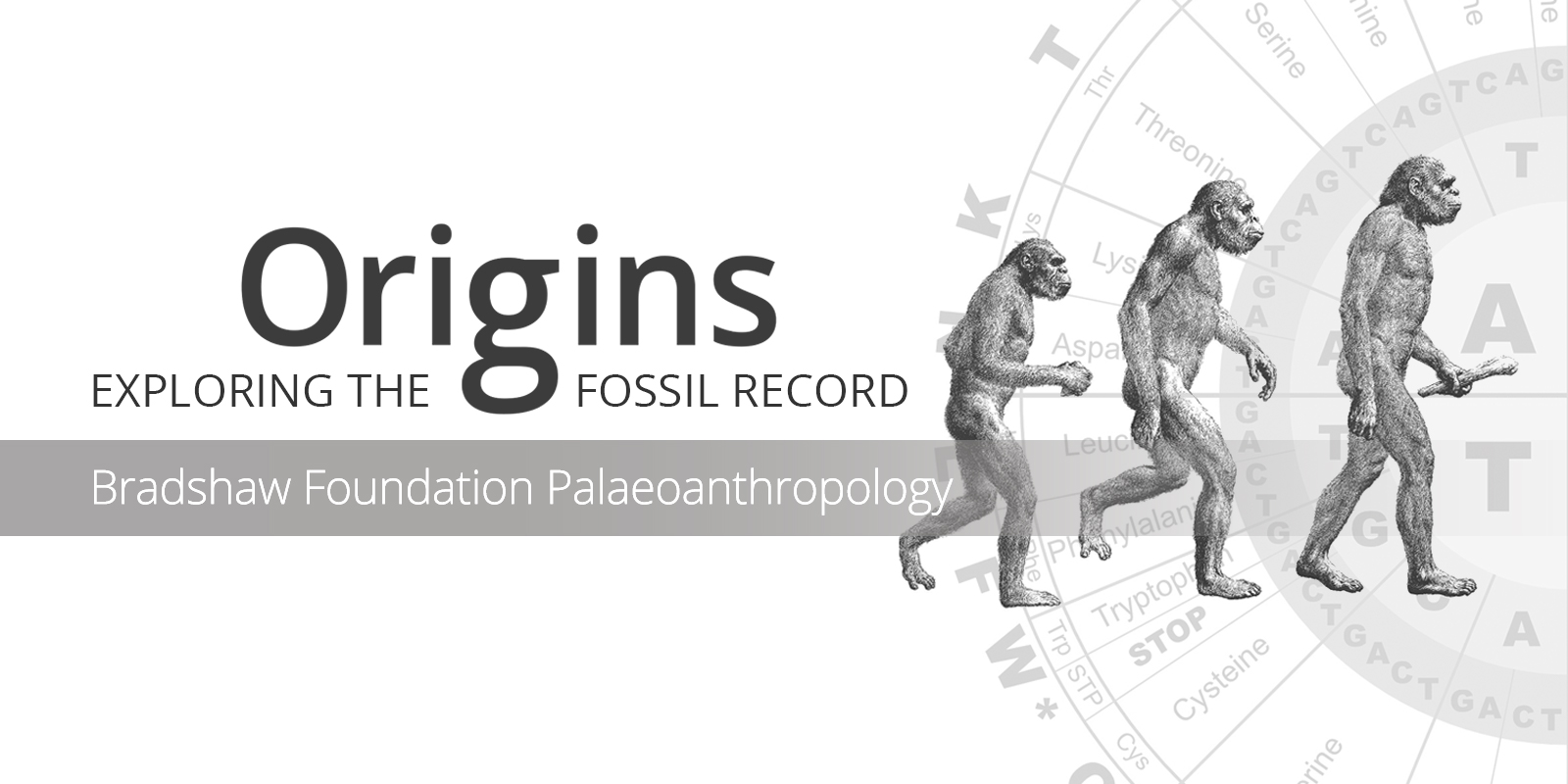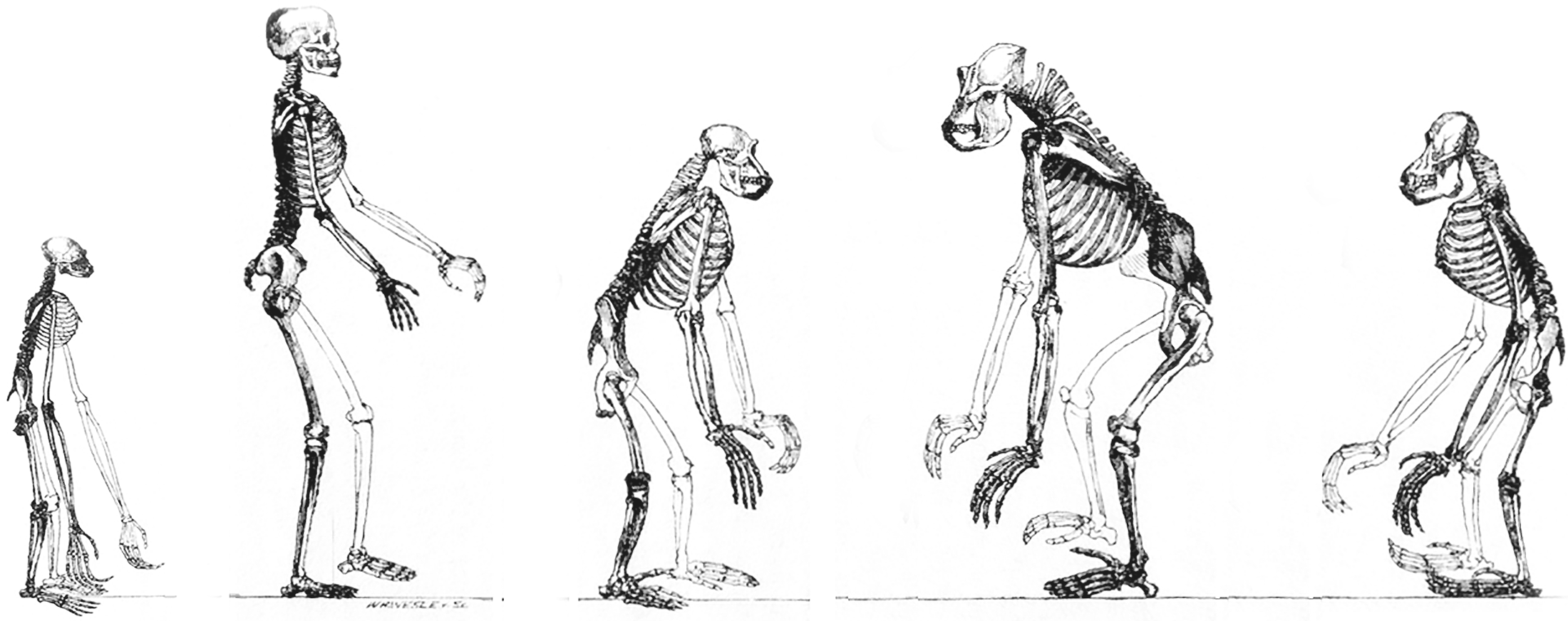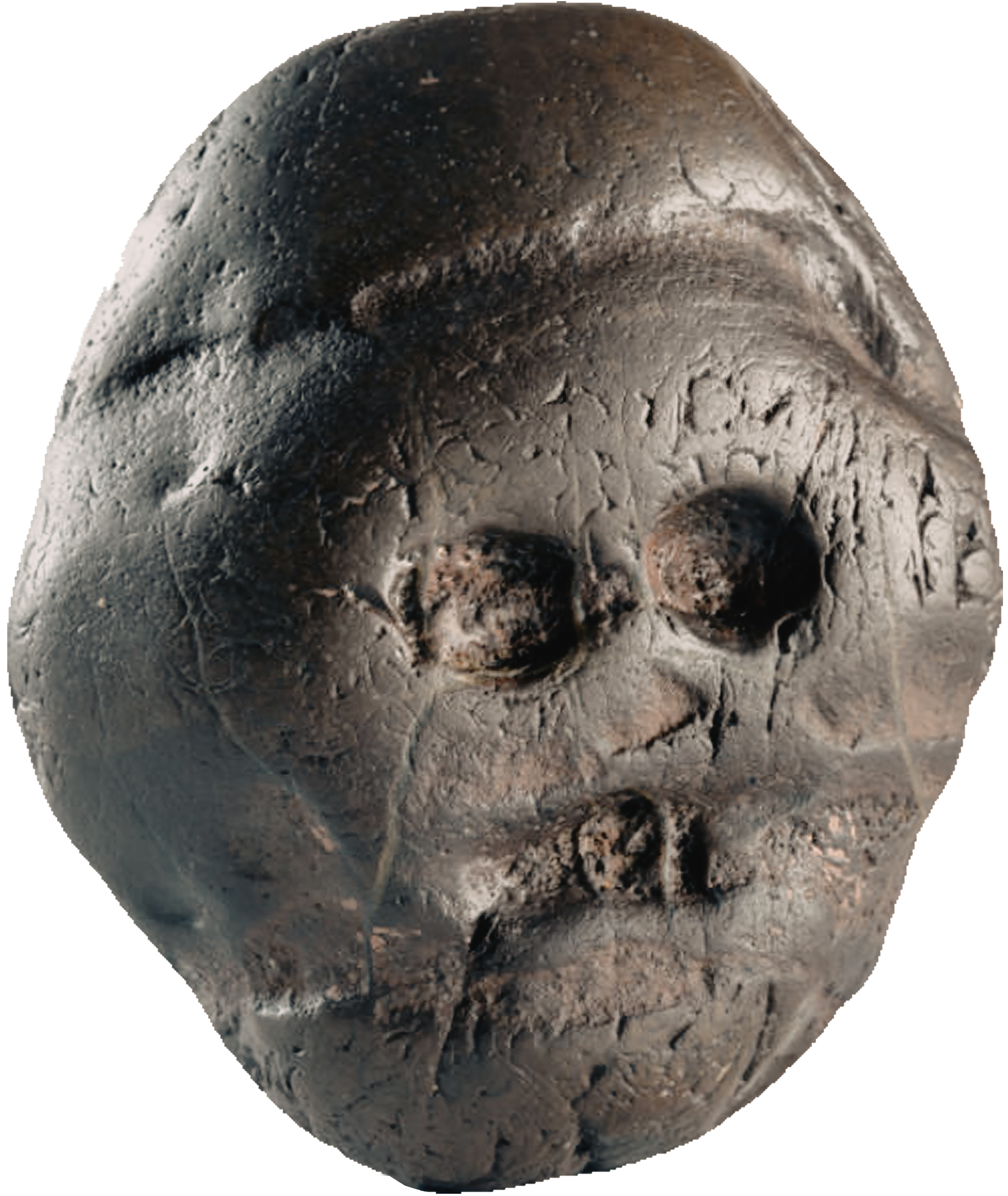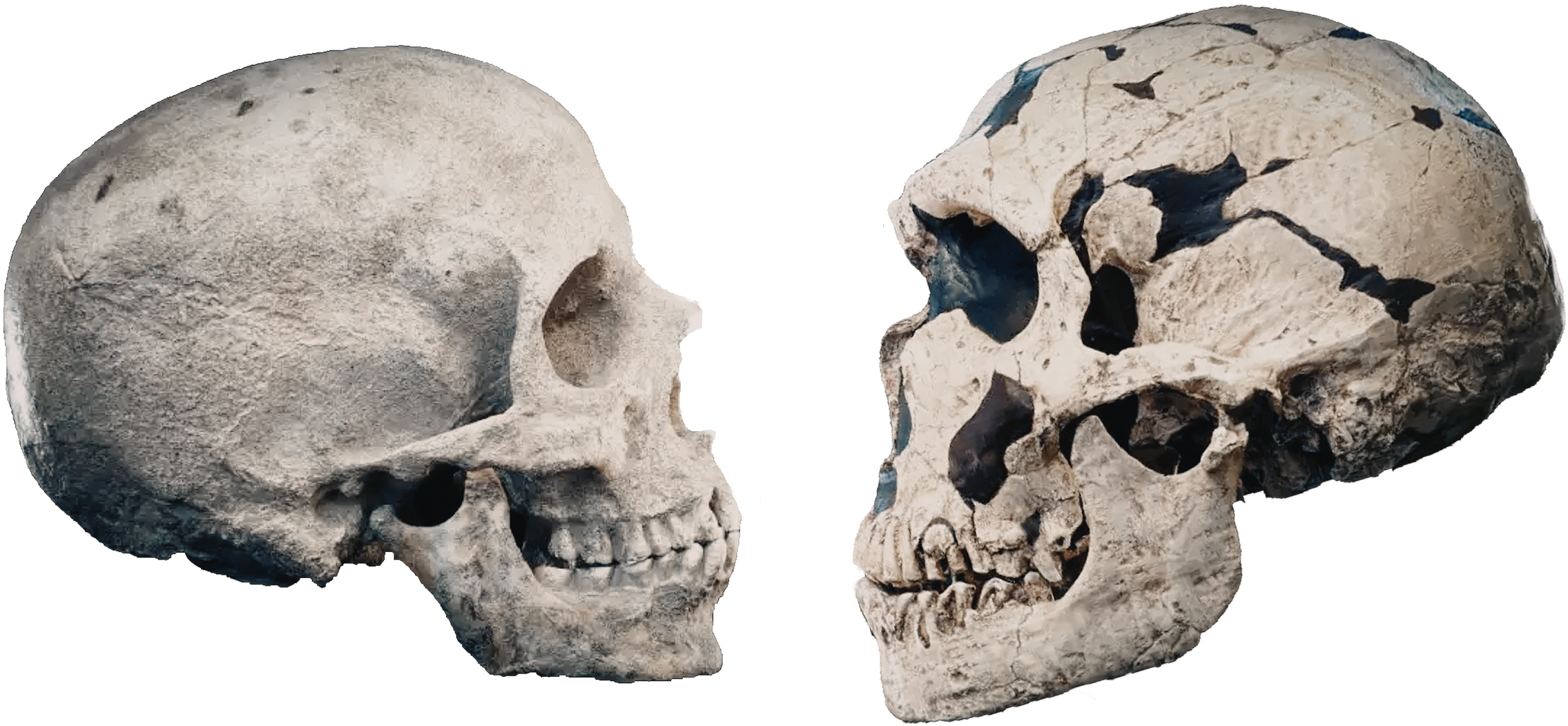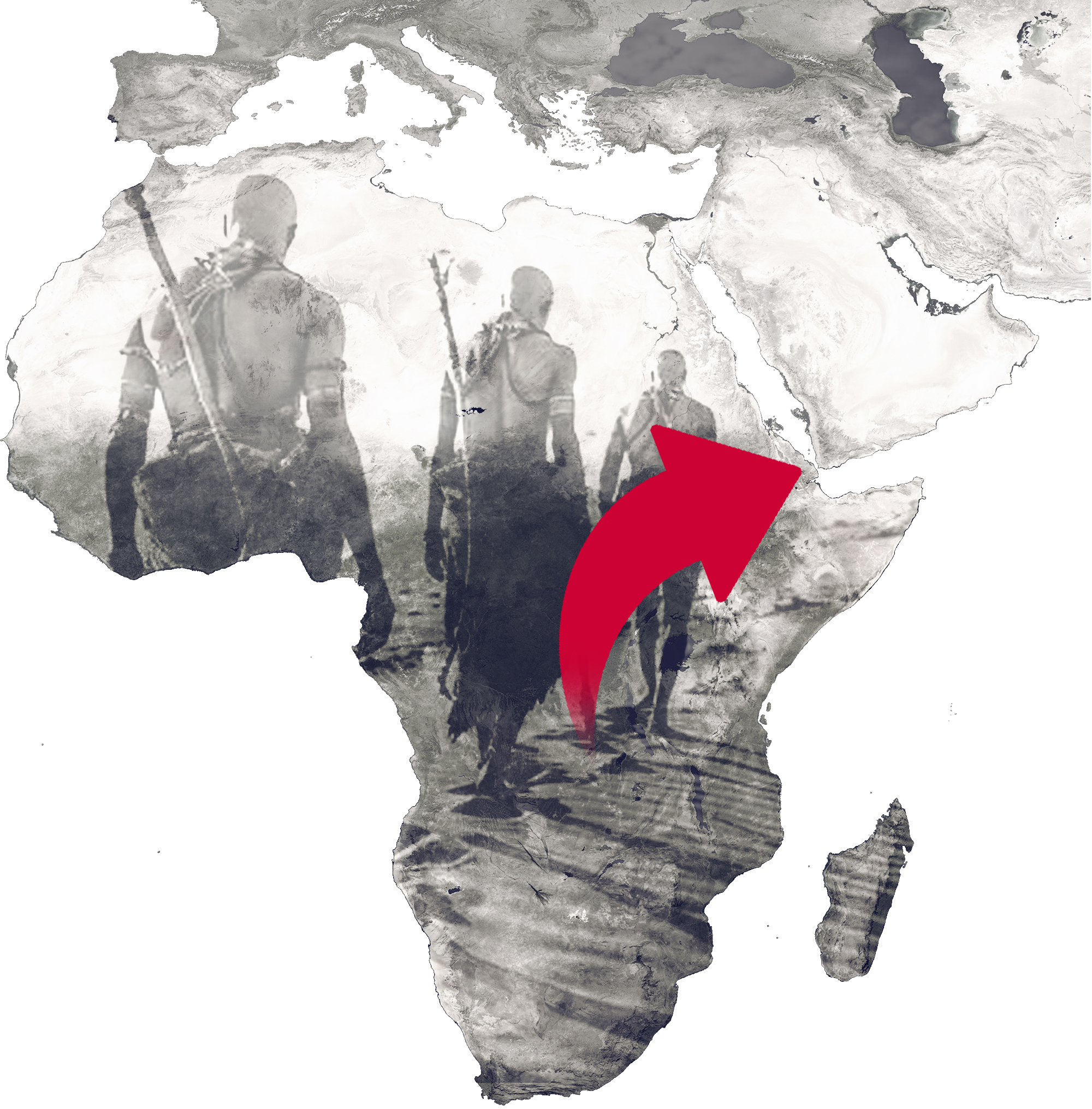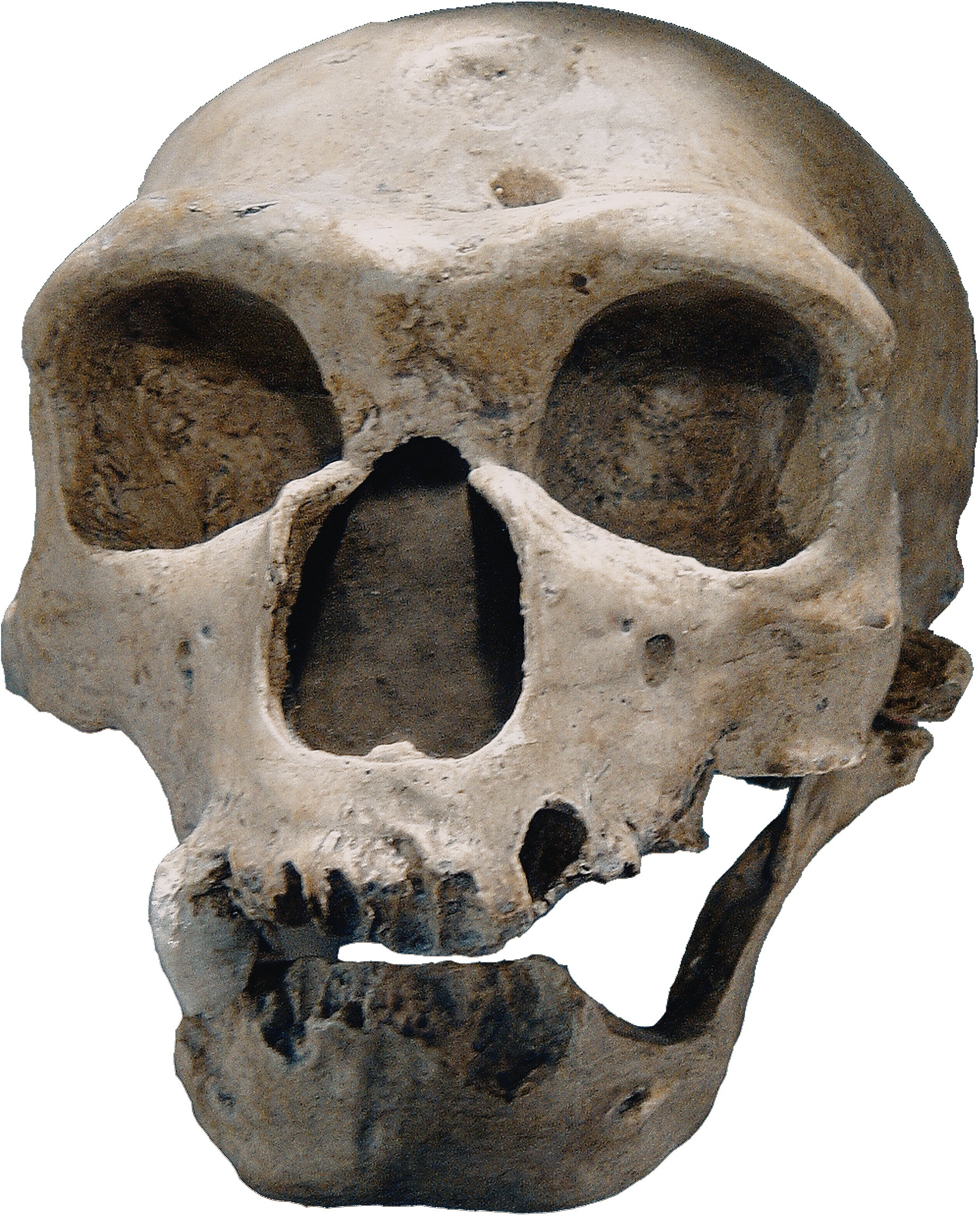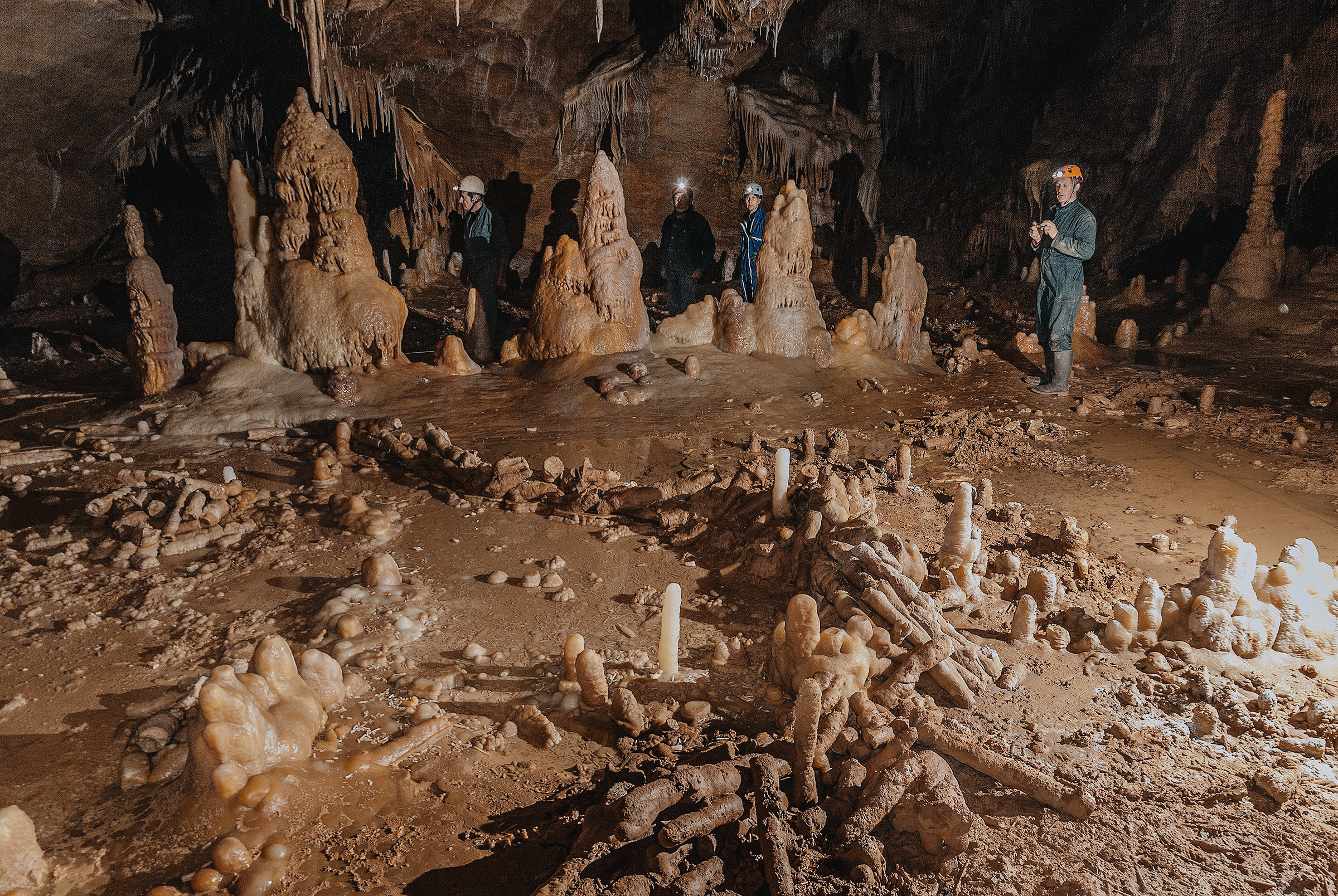Palaeoanthropology, the study of our ancestors, has leapt forward in several important fields in the last few decades. Moreover, DNA analysis and molecular biology have led to extraordinary advances in our understanding of the regional biological history of
modern humans. Genetic science allows us to track back in time and space to follow the human family in its wanderings round the globe. As part of the
Origins section, the
Bradshaw Foundation looks at key questions concerning the search for our earliest ancestors.
1. Are humans and apes different?
The science of genomics - the genetic study of the genomes and DNA sequence of organisms - helps explain this. The genomes of humans and apes differ by little more than 1%, but this in fact means there are over 30 million point mutations. For example, protein-producing genes affect brain size and speech. Some gene developments - or gene expressions - may lead to extinction, whilst others can cause innovation. This is enhanced by gene duplication, which encourage new functions which are related to, for example, brain size and immunity. Simultaneously, the human/ape divergence will also be enhanced by cultural and learning effects. The two are heavily inter-related.
Much of what makes us human is cultural, passed from generation to generation by learning. What makes humans different to apes is based on an evolutionary circle - genomes build bodies and brains, which create culture, which alters genomes. At some point, possibly with
Kenyanthropus platyops 3.5 million years ago, humans and apes diverged from a common denominator, and over time, this evolutionary circle has increased the divergence, resulting in human uniqueness.
2. Why did we start walking on two feet?
Was this to free our hands for tool making? No, because we were bipedal possibly 6 million years ago before we used tools 3 million years ago. Bipedalism involves anatomical changes. By 4 million years ago, the human lower leg was upright to the foot, where as the ape lower leg was angled outside the foot.
Bipedalism was a gradual process - some climbing, some walking. Bipedalism probably evolved many times throughout the evolutionary tree. Bipedalism represented survival and adaptation to the environment. Almost 2 million years ago our ancestors left the trees for the savannah. Walking upright may have provided greater vision regarding predators, reduced direct heat and greater circulation, and allowed for greater ground coverage.
3. Was technological development?
The oldest tools discovered - rock fragments to cut and scrape - are nearly 3 million years old. It was 1 million years later when the whole rock, not the fragments, was fashioned and used as an axe. This tool-making then evolved over the next million years. The whole process involved 'grasp' and language. Language is important because that implies 'culture' - the spread of knowledge; copying and informing. Social learning fuelled the technological revolution - gradually.
4. When did we start talking?
Language is enabled anatomically - neural connections to the tongue, diaphragm and chest muscles. As humans, we can breathe and speak without thinking. Apes have a balloon-like organ connected to the voice box which makes loud booming noises; humans do not.
Homo heidelbergensis used language 600,000 years ago. Language - or communication - would have begun with hand gestures and sounds that mimicked natural faunal sounds. This would have encouraged social bonding and an obvious survival benefit, that then evolved into a proto-language which subsequently fuelled technological advance. The two would then have gone hand in hand.
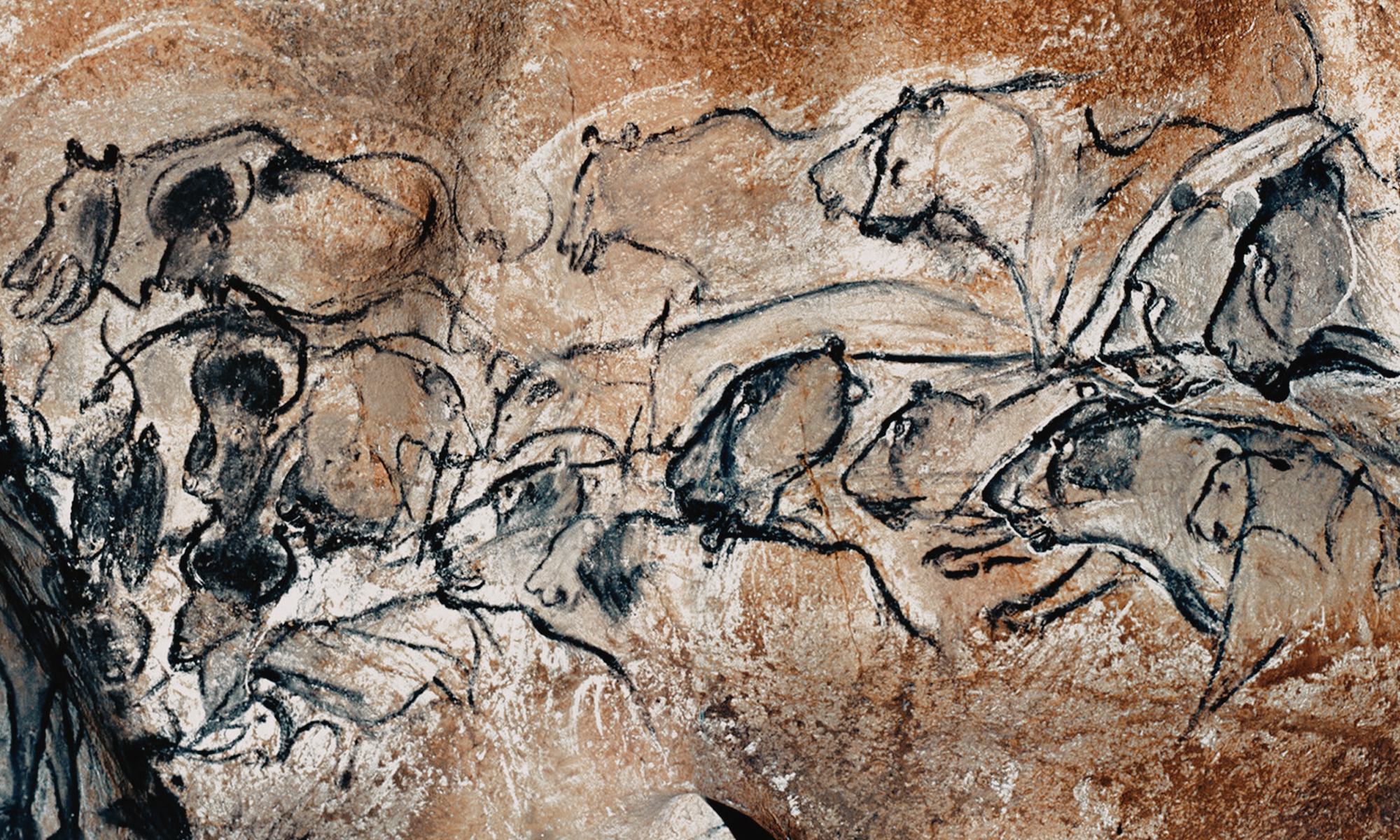
Cave paintings of Chauvet in France
The big debate is where and when the ‘human’ cultural and symbolic development began.
Some point to the cultural explosion that occurred in Europe some 40,000 years ago, as demonstrated by the dazzling display of Aurignacian art such as that found in the
French caves of
Chauvet. This implies that Europeans were the first to speak, paint, carve, dress, weave and exchange goods. Others, however, provide evidence in Africa millenia before. It comes down to the evidence.
In Africa, Makapansgat is the site of the discovery of the Makapansgat pebble. This is a 260-gram jasperite cobble with natural chipping and wear patterns that make it look like a crude rendition of a human face. The pebble, found some distance from any possible natural source, was in the possesion of a female
Australopithecus africanus, an early hominid living between 3 and 2 million years ago. The pebble was not a manufactured object, but it was possibly recognized it as a symbolic face, and treasured as such. This would make it the oldest known sculpture, or manuport [a natural object which has been moved from its original context by human agency but otherwise remains unmodified] known.
The
Tan-Tan sculpture, discovered in ancient river deposits of the river Draa, Morocco, is between 500,000-300,000 years old. The overall shape of this little quartzite pebble, almost 6 cms in height, resembles a human figure but is entirely natural and unmodified by human action. Found near stone tools, it is possible that the pebble was simply collected and kept by someone who noticed its human shape. Examination under a microscope suggests this shape may have been emphasised by deliberate alteration of the natural grooves which run across the body. Is this a work of art or a curio?
The
Berekhat Ram sculpture, discovered in the Golan Heights, Israel, is between 250,000-280,000 years old. It may be the oldest known representation of a woman. This tiny piece - only 3.5 cms in height - of volcanic scoria, reddened by heat and incorporating specks of charcoal does not immediately resemble a figurine. Largely natural, it is the groove around the neck and others on the sides which have been shown to be deliberate modifications absent from other scoria found in the area. The grooves accentuate the natural shape to suggest a human form which has been drawn as female. Does it represent curiosity or artistry on the part of the hand-axe makers of Berekhat Ram?
The Blombos ochre piece, from the
Blombos cave in
South Africa, is decorated with a delicate geometric pattern and has been dated conservatively at 77,000 years old. In fact, archaeologist Chris Henshilwood who found the ochre, believes it could be as much as 100,000 years old due to the more recent discovery of paint-workshop artefacts in the Blombos Cave.
The
cave paintings of Chauvet are up to 35,000 years old. European Palaeolithic art developed over a period of 25-20,000 years and continued until the end of the last ice age, 11,000 years ago. But the art of this time in Europe was not restricted to the
paintings and engravings found on the walls of caves.
Portable art, though often under-represented, was prevalent during this period. Sculptures depicting human figures, animal figures and therianthropes [hybrid figures, usually a human figure with an animal head] have been discovered. The
Vogelherd Horse, discovered in Germany, is between 35,000 and 32,000 years old. The
Lion Man of Hohlenstein-Stadel, discovered also in Germany, is 32,000 years old. Of a similar age is The ‘
Dancing Figure’ of Galgenburg, discovered in Austria. The
Lespugue figurine, discovered in France, is between 24,000 and 22,000 years old.
6. Is a large brain important?
Brain growth encourages evolution. The strong jaw muscles of primates actually restricted the growth of the skull. This restriction disappeared roughly 2.5 million years ago with
Homo habilis, probably as a result of climate and environment change. This change highlighted the benefits of 2 of our greatest tools - adaptability and social cohesion. Brain size increased [and intestines decreased] with diets of meat and seafood. The cooking of meat meant less effort was spent on digestion.
As Stephen Oppenheimer states, rapidly increasing brain size was a key feature that set humans apart from the walking apes that lived before 2.5 million years ago. Since then our brains have trebled in volume. This increase was not gradual and steady: most of it came as a doubling of volume in
Homo erectus 2 million years ago. The greatest acceleration in relative brain size occurred before 1.5 million years ago - early in our genus.
Modern humans - and
Neanderthals - living before the last ice age 20,000 to 30,000 years ago had bigger brains than do people living today.
7. Why did modern humans leave Africa?
About 80 millennia ago, out of one major exodus by migratory human ancestors from Africa from Eritrea to Yemen (then to India and Australia, and eventually to Europe) was the entire non-African world in all its racial and cultural diversity ultimately peopled; and to one prehistoric woman in Africa 150,000 years ago, all the peoples of the world can trace their genetic origin.
It is now widely accepted that the dawn of humanity lies in Africa, and modern man’s ancestors originated on this continent. The birthplace of all new human groups has always been south of a great barrier we now call the Sahara Desert, leading to the phrase ‘sub-Saharan’ Africa. It was from here that our ancestors colonised the world.
Homo erectus spread into eastern Asia 1.8 million years ago.
Homo sapiens left Africa between 90,000 and 75,000 years ago. [They also left Africa heading north into the Levant some 120,000 years ago but did not survive].
No one can say definitively what led us out of Africa - our curiosity, the human need to journey, our forward looking imagination - or perhaps the basic instinct for food and survival. For most of the first 2 million years on Earth, we roamed the savannah as hunter-gatherers exploiting the rich nutritional value of group-hunted game, supplemented by salads of roots, fruit, and leaves. If climate change reduced the food supply, as populations grew, a new means of survival had to be explored.
Modern humans were becoming more inventive and adaptive, in terms of technological, social and cognitive behaviour. This may have made us exploit new territory, sometimes to survive, sometimes to avoid competition.
8. Why is climate such a major factor for survival?

Why is climate such a major factor for survival?
Food and water are obviously essential for our survival. As a satellite image of the world at night shows, the lights generated by the global population are predominantly along coastlines and up rivers.
For the modern human diaspora out of Africa, climatology is a real entity, either as a window of opportunity - lower sea levels during glaciation affording further migration - or as a slammed door of disaster - fertile corridors suddenly turning to desert.
As Stephen Oppenheimer suggests, ‘The forces that drove our adaptive survival against overwhelming odds in the African savannah are the key to our nature and to our extraordinary story. We were not ‘put’ here fully formed, thinking, talking, and unique among animals. We were specially selected and moulded by a fierce, blind, unthinking environment. Like all evolving species, we had ancestors and cousins who shared some of our abilities but perished in adversity. Our physical and behavioural adaptations were focused on surviving the struggle with our greatest enemy and stern teacher, the climate’.
‘Once we had left Africa, although our brains had stopped growing, the climate continued to dominate human expansions and inventions right up to the modern age. It may be no exaggeration to say that the forces driving the waves of human technical innovation advancing across Eurasia from 80,000 years ago were more a result of stress and relief than of any biological improvement in the human computer. For example, the spreads of new technologies labelled by archaeologists as Early, Middle, and Late Upper Palaeolithic, Mesolithic, and Neolithic all coincided with dramatic ameliorations of Europe’s climate and population expansions into new territories. These events were mirrored in Southeast Asia with expansions and advances of boat-building and sailing in response to the flooding of continental shelf as the sea level rose and fell.’
9. If we are all related, why don’t we look the same?
Skin colour, hair, shape of the face and eyes are again determined by climate.
In ‘Out of Eden’ Stephen Oppenheimer explains this: ‘The most obvious physical difference between peoples of Eurasia is their skin colour, which tends to be darker in the sunnier tropical regions. This is no coincidence. Skin darkness, which depends on the pigment melanin, is controlled by a number of poorly understood genes and is also under evolutionary control. For those who live in tropical and subtropical regions, the risk of burns, blistering, and the likelihood of death from skin cancer induced by ultraviolet light is dramatically reduced by having dark skin. There are other, less dramatic advantages: for example, the melanin in pigmented skin allows it to radiate excess heat efficiently, as well as protecting against the destruction of folic acid, an essential vitamin. So in sunny climes, over many generations, people with dark skin live on average longer and have more successful families. In North Asia (i.e. Asia north of the Tibet-Qinghai Plateau and east of the Urals) and Europe there is less sun and a lower risk of skin cancer, but there is the ever-present risk of rickets, a bone disease caused by lack of sunlight that was still killing London children even at the beginning of the twentieth century.
‘So there are at least two evolutionary selection forces working in concert, tending to grade skin colour according to latitude. The sun-driven change in skin and hair colour evolves over many generations. From the available genetic evidence, Africans appear always to have been under intense selective pressure to remain dark-skinned. Outside Africa, though, we can see gradations of skin and hair colour as we move from Scandinavia in the north of Europe and Siberia in the north of Asia down to Italy and Southeast Asia in the south of those regions. The darkest-skinned groups of non-Africans still tend to live in sunny and tropical countries. Clearly, if change in skin colour takes many generations, we shall sometimes find people whose recent ancestors have moved to live in sunny countries and who are still fair skinned (and vice versa). A good example is Australia, a sunny country where the majority of today’s inhabitants are pale-skinned descendants of recent immigrants. Australia has one of the world’s highest rates of skin cancer, and this has already started it on the slow evolutionary path that will eventually lead to descendants of Europeans becoming generally darker-skinned. Conversely, the first visitors to the north of Europe and Asia probably started their journeys looking very dark skinned and evolved to become paler later. Apart from exceptions such as Australia, the average skin colour around the world is thus tuned to the relative amount of ultraviolet light.
‘Other, more solid differences, such as the shape of our face, are determined by the underlying skull bones. These do vary between different parts of East, Southeast, and South Asia, and imply a rather long period of separation between the populations of these regions. Throughout East Asia we see the Mongoloid type with an extra, so-called epicanthic fold protecting the upper eyelid, and broad cheeks and skull. This type is often further divided into Northern Mongoloid and Southern Mongoloid, with the latter showing a less marked eye-fold and including southern Chinese and darker-skinned Mongoloid types in Southeast Asia.
A great variety of peoples is found in South Asia, particularly in India. The majority of Indians, although dark skinned, are more similar physically to Europeans and Middle Easterners than they are to East Asians. Europeans, with their long, narrow heads, round eyes, and pale skin are sometimes called Caucasian. The farther north in India and Pakistan we go, the closer is the physical resemblance to ‘Caucasoid’ Levantines and Middle Easterners. In southern India, darker-skinned, curly haired, round-eyed peoples predominate. In eastern India, Assam, and Nepal there are peoples with a more Mongoloid appearance.
10. What happened to the Neanderthals?
The extinction of
Neanderthals around 40,000 years ago is a topic of much debate among archaeologists and anthropologists. Many possible causes have been put forward. Disease may have been transmitted from
modern humans to
Neanderthals. Interbreeding with modern humans may have reduced the number of
Neanderthals breeding with each other. Climate change leading to unstable climatic conditions may have contributed to the
Neanderthals' demise. Natural catastrophes may also have contributed.
All or some of these causes may have been exacerbated by competitive replacement, inbreeding depression, and demographic weakness. Moreover, the relative importance of each of these factors may have varied over time and across different regions.
So a clear black and white' picture of events is simply not possible. Research is continually providing new evidence.
Did
modern humans breed with other genus types? Why is there
Neanderthal DNA in the human genome? Were
Denisovans a different species to humans? Did humans mate with other populations?
Or is the interbreeding hypothesis overstated? The presence of
Neanderthal DNA, for example, in the human genome may be due to the genetic makeup of ancient hominin populations in 'pre-divergent' Africa.
So a clear black and white' picture of events is simply not possible. Research is continually providing new evidence. Much of the latest research has been presented in the publication 'Kindred:
Neanderthal life, love, death and art' by Rebecca Wragg Sykes (Bloomsbury Sigma 2020, ISBN-13: 978-1472937490). 'Kindred' is the definitive guide to the
Neanderthals. Since their discovery more than 160 years ago,
Neanderthals have metamorphosed from the losers of the human family tree to A-list hominins.
Rebecca Wragg Sykes informs us in Kindred that in just 10 years genetics has overtaken archaeology; 'Genetics opened up a world where
Neanderthals from different lineages moved across continents.' Not that archaeologists have been dithering. The forensic analysis described in this book is so thorough, it leaves you with the impression that you actually know Shanidar 1 and Old Man, because as the author states '...we can reconstruct in quite outstanding detail the conditions in which
Neanderthals lived at any point in time, and also what the world was like when they disappeared.' Put another way, 'a hand's breadth thickness may be a palimpsest of a thousand summers' and measuring the true number of occupations represented by particular layers is now possible due to ingenious methods such as fuliginochronology. From her book I now see that it's all about the hearth; 'Hearths are archaeological touchstones. They lie at the centre, where the warp of time and weft of space connect....We don't need to see them sitting face to face; we can literally see it in the way artefacts encircle the ashes and the charcoal.' That's why Shanidar 1 and Old Man seem so familiar.
The publication urges the reader to ask 'What happened?' This question became louder and louder as Wragg Sykes calmly reveals numerous aspects of the
Neanderthal culture, their ingenuity and their adaptability. From the crafted spears and the left-side bones chosen as tools for right-handers at Schöningen to the evidence of composite tools, craft specialisation and collaboration. From the diverse hunting strategies indicated by the variety of habitats and faunal behaviour to the supplementary diets of plants and the use of fire to cook. The author is able to describe organized living spaces as well as a fundamentally nomadic tendency that involved cultural 'exchange'.
Was it a lack of symbolic apprehension or artistic sensibility that proved to be a disadvantage to the
Neanderthals? The author turns us towards Montauban in southwestern France where there resides the cave that is now known as Bruniquel. Two circular forms were constructed from stalagmites - over 400 pieces - some 174,000 years ago deep inside the cave. As the author points out, 'Bruniquel laughs in the face of austere, survival-only explanations for
Neanderthal behaviour.' She proceeds carefully; 'Ascribing any level of formal spirituality to
Neanderthals would go far beyond the archaeological evidence, but they too encountered all of life's sensory marvels.' Yes, there is evidence of art. No, it is not representational. But before we analyze that, Wragg Sykes asks us to consider what criteria we are applying to the Neanderthal culture. Take, for example, 'death'; 'Death and its handling have always mattered. Along with art and symbolism, some of the fiercest debates about
Neanderthals have concerned what they did with their deceased. Despite advances in the past three decades, and even a newly discovered skeleton, understanding what mortality meant to them is still controversial.' Her analysis of the evidence relating to their grieving process and mortuary traditions makes intriguing reading.
And then came 2010. First we hear about the
Denisovans, and then we learn that the first
Neanderthal genome showed they had directly contributed to our own ancestry - between 1.8 and 2.6 per cent
Neanderthal DNA in everyone except those of sub-Saharan heritage. What follows is fascinating. For example, however they were conceived, how were hybrid children raised to survive? What were the benefits of interbreeding for
Homo sapiens in terms of new pathogens encountered whilst on the move? Did this immunity work both ways (or should I say 3 ways) or was there the possibility of a debilitating contagion? Finally, the author asks if there was a 'light-bulb moment' caused by a new genetic mutation which heralded 'more formalised artistic traditions, or flashy burials'?
Kindred is beautifully written, it's convincing, and it's full of surprises. It employs the very latest science to construct a very full and clear picture whilst avoiding over-interpretation. Most importantly, it presents a fascinating story not just of Neanderthals but of ourselves, and we would all do well to pay heed to the sobering thoughts of the Epilogue.
100,000 years ago, the
Neanderthals existed far and wide across Europe and Asia. By 24,000 years ago, they had become extinct. One theory to explain their demise is that
modern humans, as we occupied these regions, brought diseases that the
Neanderthals could not fight against. Or it may have been competition for resources of food. Some scientists argue that
Neanderthal archaeological sites do not show signs of direct contact, and it may have been climate change - an erratic climate - which restricted the hunting for this species which was less adaptable than humans.
12. Is there anybody else?
Scientists agree that other hominin species coexisted alongside our ancestors throughout prehistory. The relatively recent discovery of
Homo floresiensis on the island of Flores, living until 18,000 years ago, may be a case in point. The even more recent discovery of the
Denisovans, discovered in Siberia but spreading as far south as Indonesia approximately 40,000 years ago, may be another.
An article in 2023 in The Observer by Sarah Wild - 'Where did they all go? How Homo sapiens became the last human species left' emphasizes the point that at least nine hominin species once roamed the Earth. What became of our vanished ancestors? What else is there to discover?
We know of several other Homo groups that existed alongside Homo sapiens between 300,000 and 100,000 years ago. Some were quite similar to
Homo sapiens. Stocky
Neanderthals endured Europe’s chilly weather and the mysterious Denisovans eked out an existence in the rarefied air of what is now Siberia and Tibet, and possibly further afield.
Homo erectus, the long-legged “cosmopolitan” species – so called because of the impressive geographical range it spanned – still wandered through parts of Indonesia; Homo longi (also known as the “Dragon man”) lived in China.
Homo rhodesiensis (also known as Homo bodoensis or
Homo heidelbergensis – scientists continue to debate its name and membership) was alive in central and southern Africa. Other species were rather distinct from us:
Homo naledi, with its ape-size brain, rambled through the woody grasslands of South Africa, and the diminutive
Homo floresiensis and Homo luzonensis lived, breathed and died on the islands of Flores and Luzon in Indonesia and the Philippines respectively.
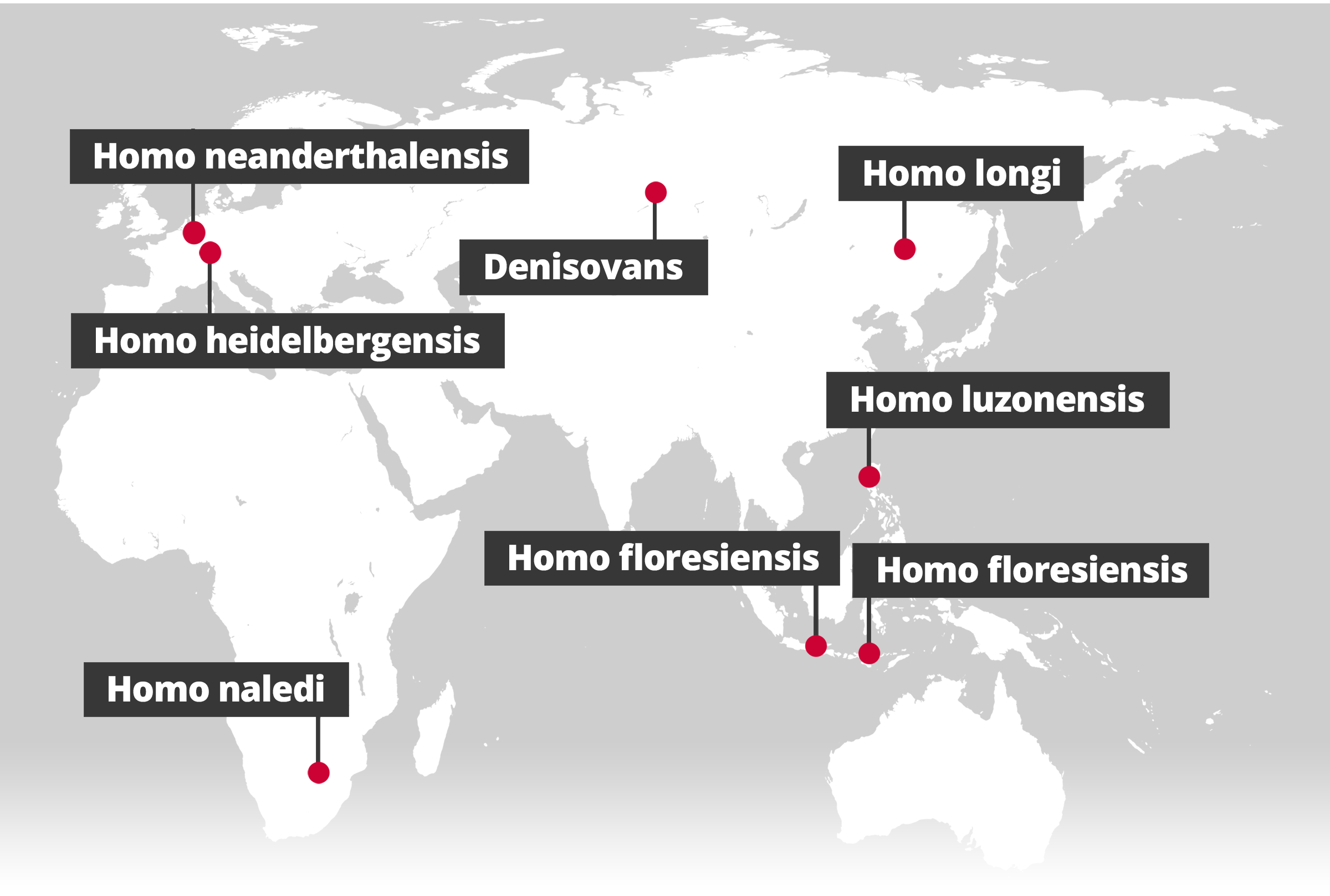
Hominin species discoveries
For most ancient human species, the fossil record is sparse.
Homo naledi individuals, for example, are only found at a single site in South Africa. Some of the other species are known only by a handful of individuals. In Africa, where
Homo sapiens first emerged, there are surprisingly few Homo fossils. However, there is a plethora of data about Neanderthals, including full genomes extracted from bones. These close relatives roamed Eurasia until about 40,000 years ago, living in small groups. Scientists know significantly less about the
Denisovans, but what they do know has reshuffled our understanding of human origins. In 2008, in the Denisova cave in Siberia, Russian archaeologists found several hominin bone fragments, including a finger bone and part of a toe. The cold weather had preserved some of the DNA in the finger bone, which yielded the full genome of this previously unknown species.
Discovering a world of other human species:
- Homo neanderthalensis - discovered in the Neander Valley, Germany, in 1856.
- Homo erectus - first discovered on the Indonesian island of Java in 1891.
- Homo heidelbergensis - discovered in Mauer, near Heidelberg, Germany, in 1907.
- Homo longi - identified in 2021 from a skull discovered in 1933 in Harbin, China.
- Homo floresiensis - discovered on the Indonesian island of Flores in 2003.
- Homo luzonensis - discovered in Callao Cave in the Philippine island of Luzon in 2007.
- Denisovans - identified in 2010 from a finger bone discovered in the Denisova Cave in the Altai Mountains, Siberia, in 2008.
- Homo naledi - discovered in the Rising Star Cave system, Gauteng province, South Africa, in 2013.
13. Are we still evolving?
Humans are still subject to evolutionary pressures. Genetic changes are still occurring in order to adapt and respond to changing conditions - despite cultural and technological innovations. In humans, these changes are considered to be microevolution, whereas the Origins archive which looks at the whole hominin evolutionary tree is macroevolution.
Changes of the human genome are manifested in, for example, lighter skin and blue eyes in northern Europe, partial resistance to diseases such as malaria among some African populations and lactose-tolerance in Europeans but not Chinese and African. The continued surge in global population will also lead to faster evolution as more mutations occur.

